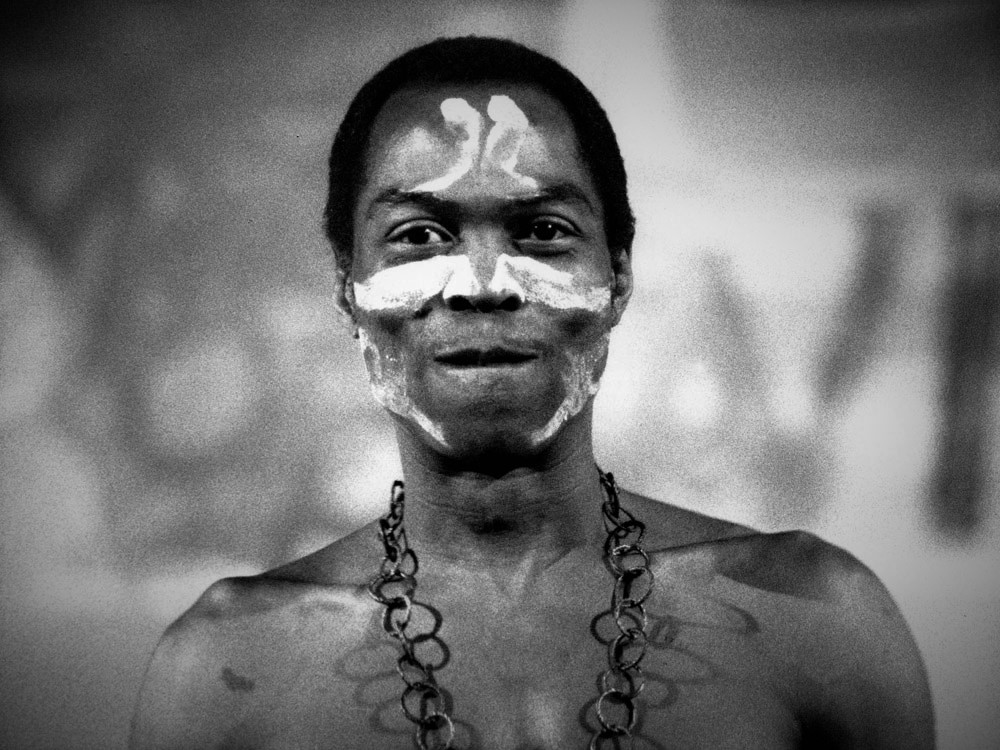Time flies and people tend to move on to new things and forgetting both people and situations. Nonetheless, there are some people that cannot be ‘moved’ away from or forgotten. Okay, maybe not ‘cannot’, but it will be safe to say, should be constantly remembered especially for their impact in/beyond their generation.
In a world usually split into heroes and villains, good guys and bad guys, some people cannot be exactly fit into any single category; they are just an oxymoron personified; they make sense in a crazy way. Introducing, Fela Anikulapo Kuti; Loved by some, Hated by others, Respected by All!
Early Life and Career
Born 15th October 1938 in Abeokuta, Fela’s birth name was Olufela Olusegun Oludotun Ransome-Kuti. At the later stages of his life, he substituted the name ‘Ransome’ (stating it was a slave name), with ‘Anikulapo’. Anikulapo means, ‘he who carries death in his pouch’, but Fela interpreted as ‘I will be master of my own destiny, deciding when death should take me’.
He started school at the Abeokuta Grammar School, proceeded to London in 1958 to study medicine which he traded for music and went to Trinity College of Music instead. So before Wande Coal could go from ‘Mushin to Mo’Hits’, Fela had already gone from Medicine to Music! You must understand what kind of feat this was at the time Fela lived in. A time where every parent wanted their child to be either a doctor or a lawyer. Bottom line, Fela was a ‘Boss’; in fact, another synonym for “follow your dreams’ should be ‘FELA’!

Fela and the Coat of many Colours
Fela was a catalogue of many things at the same time; he was a musician, instrumentalist, human rights activist, superstar, mystic, polygamist, legend, rebel and the list could go on for a while. Evidently, although Fela’s body wore clothes minimally, his soul was clothe in a coat of many colours. A simple yet, broad sub-categorization of some of these colours could include: Innovator, Musician and Activist.
- Innovator: A lot of people love Afrobeats. Infact, Afrobeats is like the ‘jollof rice’ of Nigerian music. But before Fela, there was nothing like it. While Oyibo invented ‘Remix’, Africa, precisely Nigeria, specifically, Fela (though he gave strong credits to his drummer, Tony Allen for enabling the creation process) created Afrobeats. This pattern was a complex fusion of funk, jazz, highlife, psychedelic rock, rhythms and West African chants in one piece. Simply put, what a collage is in fine arts is what Afrobeats is in music. Fela was a ‘fine artist’ in every sense of the word.
- Musician: Though Fela started with the trumpet as his favorite instrument, he became a multi-instrumentalist (playing the saxophone, keyboards, guitars, drums). He was also a composer, singer and performer etc. He started music with his formed band ‘Koola Lobitos’ in 1960’s, later renamed at different times to ‘The Afrika ’70’, ‘The Nigeria ‘70’ and ‘The Egypt ‘80’. At different times in his life, he shared the stage with a lot of international music stars, some of which included Carlos Santana, Bobby Tench, Bono, Hugh Masekela, Lester Bowie etc.
- Activist: Music is meant to be an art, but to Fela it was his heart. It became more than just sound, for Fela, music became a weapon! He used music to criticize government and its officials for corrupt practices, oppression and mistreatment of people. He formed a political party called ‘Movement of the People’ (MOP), whose ideologies were that of Africanism; (like those of Kwame Nkrumah and Julius Nyerere). He supported Pan-Africanism, Socialism, the American Black Power mentality and whatever will unite the African Brotherhood. To put it another way, Fela was Thomas Sankara on a Saxophone, Che Guevara on the Microphone and Bob marley in his thoughts.
Family Life
There’s a Russian proverb that says “He that has loved one woman has loved all and he that has loved many women has loved none,” Fela didn’t feel that applied to him, he married 27 wives-mostly his singers, dancers and composers-although he eventually developed a 12 per time rotational system. His first wife, Remilekun Taylor (Mother of Femi, Yeni and Sola) however, was the most popular his wives. In Nigeria, Fela was a legend in many ways.
Death and Legacy
Fela died on the 2nd of August, 1997 (at 58 years of age). The cause of his death is still debatable. He was honored with a lying-in-state, and had over a million people attending his funeral.
His legacy lives on:
- The New Afrika Shrine in Lagos has been opened under the supervision of Fela’s son, Femi.
- His albums have been re-mastered and released into the markets by some of the labels he has worked with.
- His name has been mentioned posthumously in movies, tributes in songs made to him and his clips played. Eg. Thomas McCarthy’s 2008 film the Visitor, K’naan’s song The Messengers,
- A book was written about him by Carlos Moore, different movies have been produced and directed by people such as Bill T. Jones and Alex Gibney about him, and a stage play was written by Onyekaba Cornel.
- Fela’s Discography has at least about 25 audio albums and 6 video recordings.
- An annual even tagged, ‘Felabration’ is held in the honour of Fela.
- His impact on Nigerian and African music cannot be over emphasized.
Fela-whether legend, rebel or misfit-is worth knowing!


